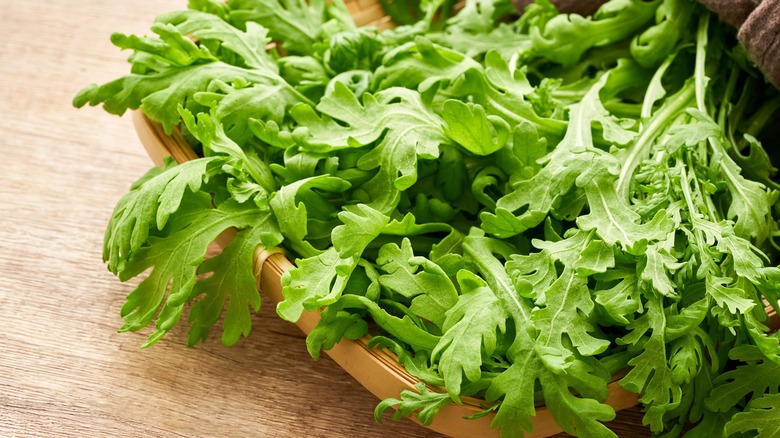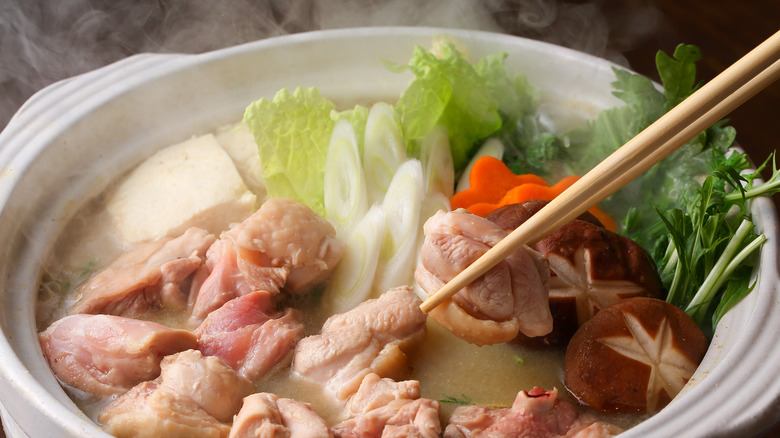What Happens To Chrysanthemum Greens When They're Overcooked?
Flowers aren't the only part of the chrysanthemum that's edible — so are the greens. While decorative varieties should remain untouched, the University of Florida explains that edible chrysanthemums like the crown daisy (also known as garland chrysanthemum) are a great way to diversify your intake of leafy greens. If, however, you're unfamiliar with the herb, then you might want to be cautious of overcooking it.
Whether you opt for big broadleaf or ruffled narrow-leaf versions, CHEFIN explains that both are teeming with antioxidants like beta-carotene that can protect the body from free radicals and reduce the risk of diseases. Thanks to these benefits, it's no wonder that crown daisies are so popular in a range of cuisines, particularly Asian. In fact, Delighted Cooking shares that you might even need to venture to specialty grocers to find the greens, where they might be sold under names such as tong ho choi, shungiku, or chop suey greens.
Like an alternative to other pungent lettuces like kale or endive, chrysanthemum greens generally have a bold flavor. Vegetal and grassy, the tender leaves and crunchy stalks both have a distinctively peppery undertone that intensifies as the plant matures. That said, to ensure that the unique profile of the crown daisy is best represented, it's wise to avoid overcooking. But, does boiling or sautéing for too long really make that much of a difference?
Overcooking amplifies bitterness and destroys texture
Although the daisy-like greens can be enjoyed raw, garland chrysanthemum also fares particularly well when cooked. Boiled in an umami-rich Chinese hotpot or tossed into an earthy stir-fry right before serving, the leafy greens can add another dimension of flavor and texture to any dish, but only when cooked properly.
For the absolute best results, Diversivore recommends thinking of cooking crown daisy like you would spinach, heating delicate greens just briefly to maintain a bit of their structure. Ready within a matter of 30 to 60 seconds, Specialty Produce advises that cooking them for any longer means running the risk of the greens becoming overly mushy and mouth-puckeringly bitter — and nobody wants a forkful of slimy, acrid leaves.
While stems might take a bit longer to cook given their heartier texture, Kimchimari notes that when boiling any part of the vegetable, it's best to always add the greens into an ice bath immediately afterward. By blanching, the cooking process comes to a halt, allowing the crown daisy to maintain its peppery quality without becoming too powerful. Plus, a polar plunge can also keep the greens looking vibrant and visually appealing.

